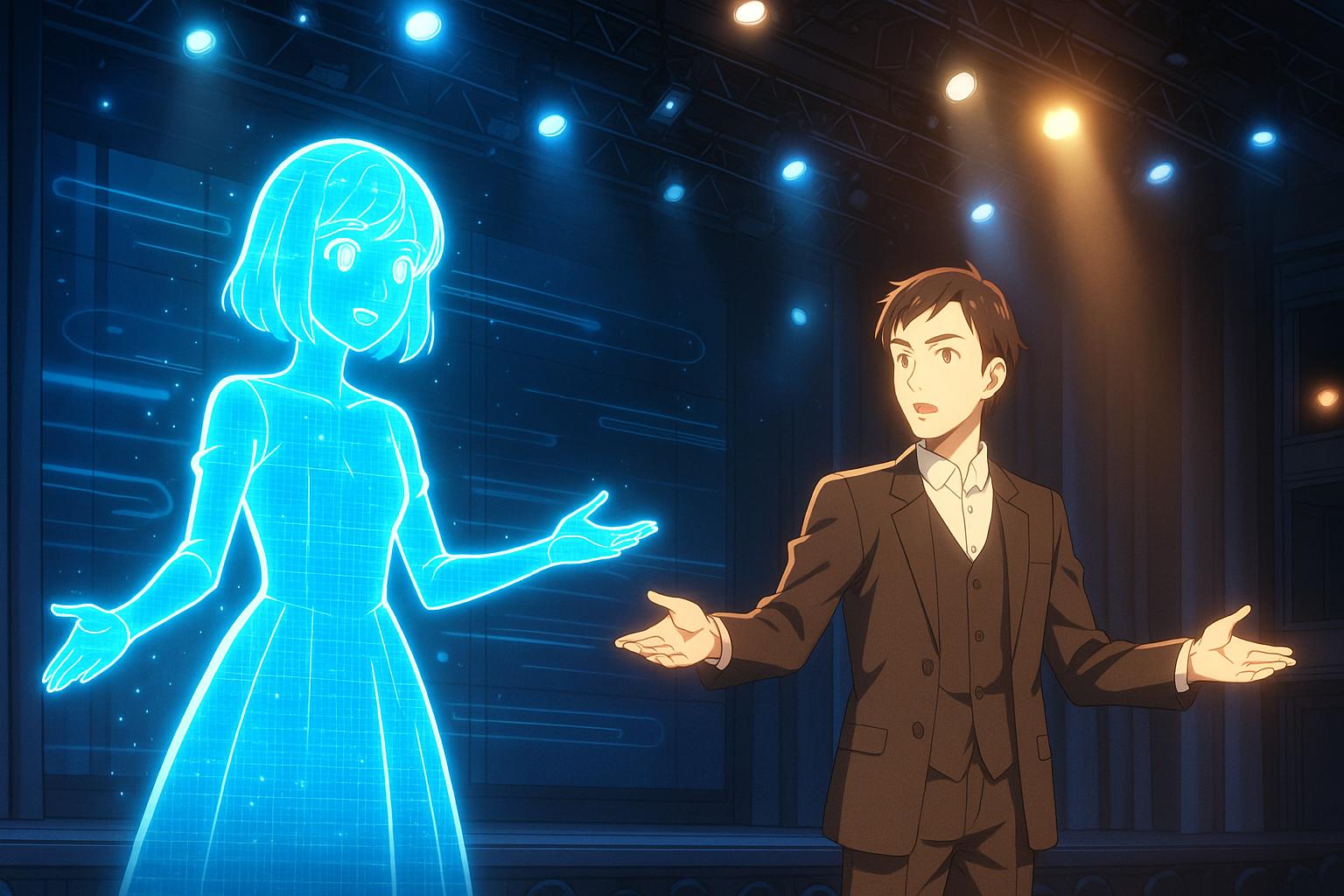The future of theatre is poised for a radical transformation, with discussions around the use of AI-generated avatars gaining traction among industry leaders. Recent proposals from the Society of London Theatre and UK Theatre suggest the integration of digital "virtual understudies," raising the prospect of on-demand performances where substitute avatars could step in for absent actors. This concept, while seen by some as a means to enhance accessibility and reduce costs, has ignited a fierce debate among professionals who fear that such technological advances could threaten the livelihoods of traditional performers.
Claire Hodgson, co-artistic director of Diverse City, emerged as a supporter of this hybrid theatre model during a recent panel discussion. She expressed optimism about the coexistence of human actors and responsive avatars, suggesting that by 2050, audiences may witness a blend of live performances and digital representations. Hodgson asserted that for cash-strapped theatres, particularly subsidised ones struggling to maintain a full roster of understudies, the introduction of avatars could be a significant financial relief. Her remarks highlight a growing interest in leveraging technology to address real-world challenges within the theatre sector.
However, not all industry figures share this vision. Director Suba Das expressed scepticism about the practical application of this technology in traditional venues, citing the constraints of existing theatre infrastructure. He observed that while modern immersive experiences, such as ABBA Voyage, have successfully deployed holographic avatars in custom-built environments, many theatres remain ill-equipped to support such innovations. Das’s concerns echo a fundamental question within the industry: can technology genuinely replicate the artistry and spontaneity of live performances?
Critics of the AI avatar initiative raise substantial ethical concerns, particularly regarding professional integrity and the essence of live theatre. Theatre blogger Carl Woodward articulated a common sentiment among performers, emphasising the critical role of understudies in maintaining the dynamic spirit of live events. He argued that the magic of theatre lies in its unpredictability, and replacing living actors with digital stand-ins risks diminishing the soul of the art form itself. This perspective aligns with broader worries shared by many in the performing arts community, which has increasingly mobilised to protect against what they perceive as the encroachment of AI technologies.
In response to the rising anxieties surrounding AI in the entertainment sector, legislative changes are starting to emerge. For instance, California recently enacted laws requiring explicit consent for the use of an actor's likeness in AI-generated content, signifying a cautious step towards safeguarding performers' rights in an evolving digital landscape. This regulatory framework aims to address industry fears about potential job losses and erosion of creative control, echoing similar sentiments expressed by union leaders of both SAG-AFTRA and Equity. These organisations represent a growing consensus among artists that proactive measures are necessary to protect their livelihoods against the burgeoning influence of AI.
Moreover, initiatives within the industry, such as the recent agreement between the Screen Actors Guild and Replica Studios, illustrate efforts to establish ethical standards for AI use in voice acting. By setting guaranteed minimum payments and requiring consent for digital voice replication, these developments showcase an increasing recognition of the need for artist protection as technology continues to advance.
The conversation surrounding AI avatars in theatre is far from settled, reflecting a broader cultural clash between innovation and tradition. Some endorse the potential for avatars to democratise access to theatre, enabling resources to be shared more efficiently, while critics warn of the risks associated with diminishing the human aspect of performance. With many performers asserting that the unpredictability and shared experience of live theatre are irreplaceable, the future landscape of performing arts remains in a delicate balance.
Ultimately, as discussions illuminate various aspects of this complex issue, key stakeholders in the theatre community must navigate the difficult terrain between embracing new technology and preserving the rich tapestry of live performance that has captivated audiences for centuries. As theatre grapples with these rapid changes, the outcomes will likely define not only its future but also the broader cultural dialogue around the role of technology in art.
Reference Map:
- Paragraph 1 – [1], [2]
- Paragraph 2 – [1], [3], [7]
- Paragraph 3 – [4], [5]
- Paragraph 4 – [2], [6]
- Paragraph 5 – [6]
- Paragraph 6 – [1], [3]
Source: Noah Wire Services
